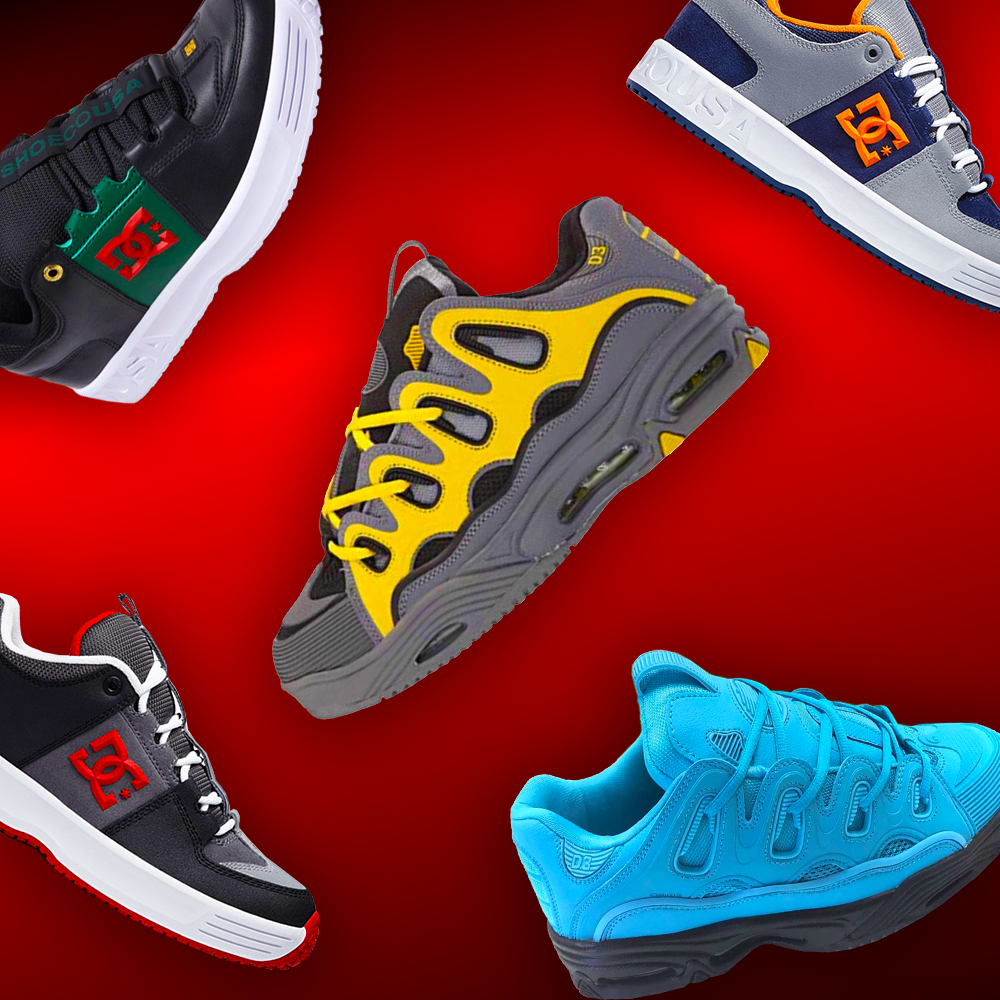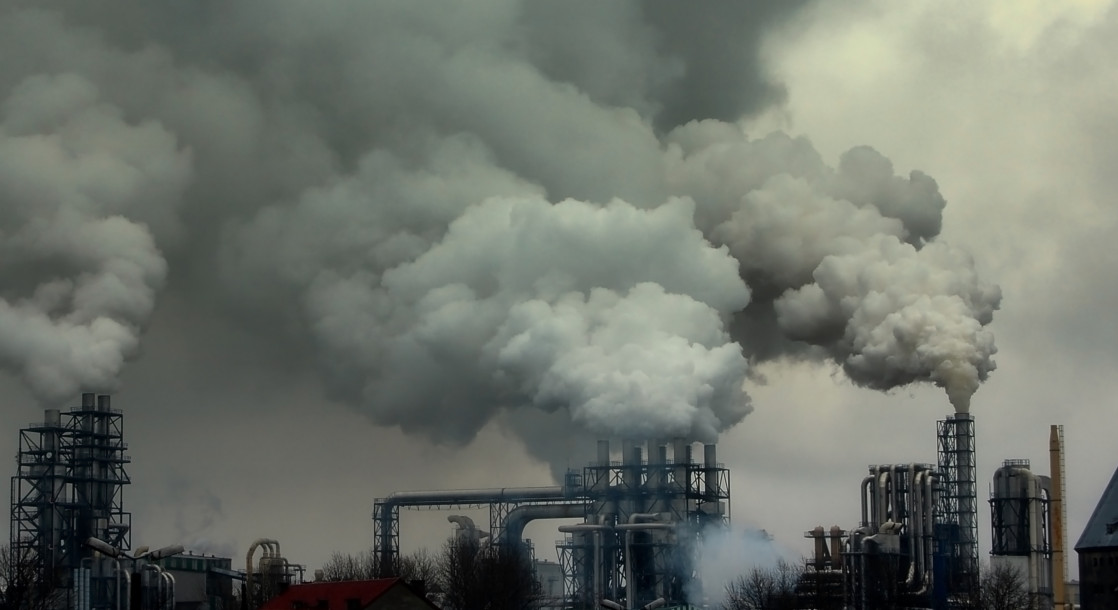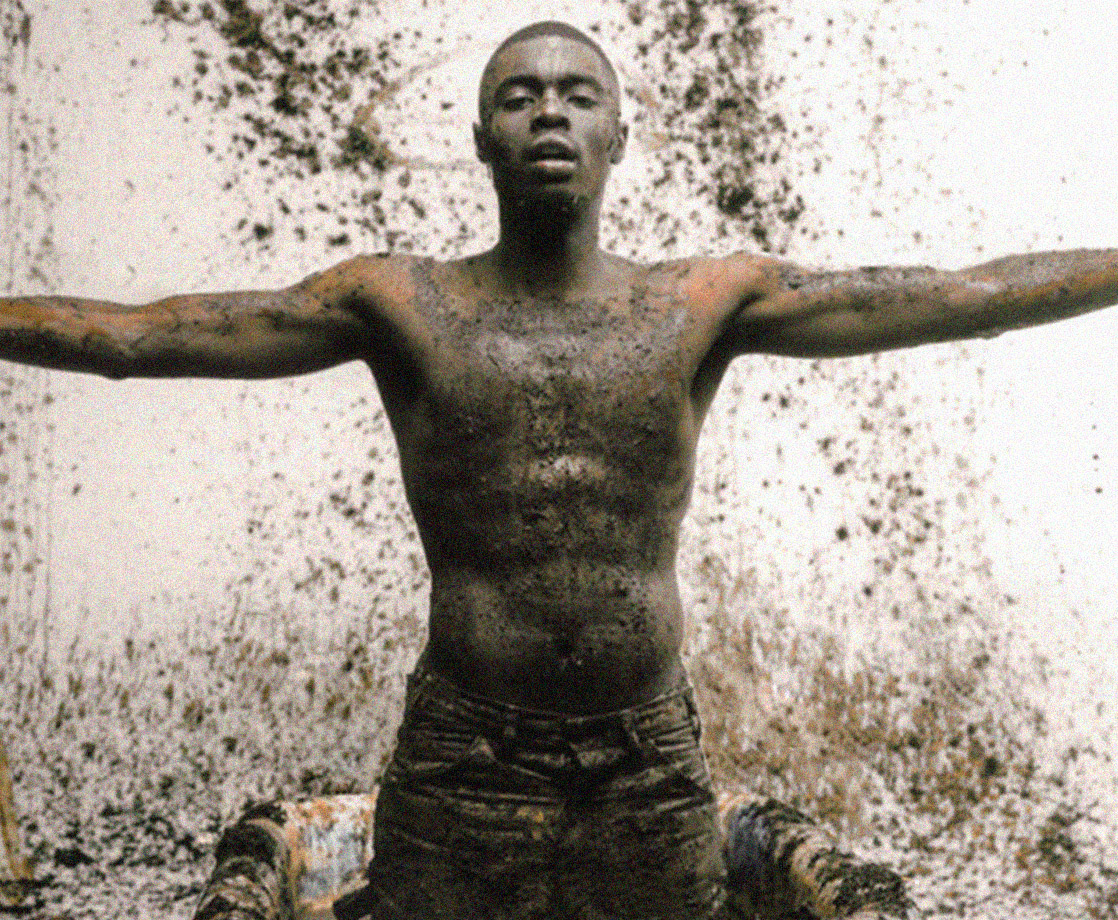Cannabis and skateboarding are like peanut-butter and jelly; they’re both great on their own, but even better together. In our column The Ganja Grind, we’ll take you into the fold of what to look out for in the world of skateboarding. From interviews with our favorite pros and compilations of social media hijinks, to video reviews and sneaker releases, this series will get your week rolling.
Think of a menswear fashion trend from the past few decades, and skateboarders will tell you they started it. Graphic t-shirts? Skaters will take credit for that, thank you very much. Normcore? Skaters, they say. High-water cuffs and Converse? Been there, done that. Those fanny packs-turned-shoulder bags that can only accommodate two joints and a dead iPhone? Definitely skaters. “You know, Supreme is just a skate shop,” they’ll say.
And like clockwork, once the mainstream fashion industry has caught up to the latest progression, skaters are already pushing onto the next big thing; from baggy cargos to painted-on ripped denim, bootleg corduroy, and then Dickies, until it’s eventually back to velcro hip pockets… but this time in camo. It’s a cycle as old as fashion itself, but that won’t stop your local skatepark lurker from claiming that Peter Smolik was the first person ever to wear track pants outside the gym.
In 2018, though, instead of accepting credit for the year’s biggest sneaker trend and moving on to something new, the skater-owned shoe industry tripped over itself. Departing decades of forward progress in favor of a few steps backwards, skateboarding’s endemic shoe brands dove clumsily into the fashion industry’s recent obsession with overtly clunky dad shoes. But in an attempt to catch-up to multinational sportswear brands with relatively new skate divisions, homegrown skate shoe brands failed to score significant points with fashion fiends or young rippers, and appealed mostly to aging ex-skaters. It was a literal dad move in all the wrong ways.
A perfect storm of late ‘90s/early aughts East Coast nostalgia and rushed marketing, the beefy skate shoe resurgence was set in motion in late 2017 by Philadelphia’s resurgent downtown skate scene, and vintage-obsessed skaters like New York transplant John Shanahan. Combined with an overall need for core shoe brands to differentiate themselves from relative industry newcomers like Nike, Adidas, and New Balance, as well as the larger, haute-couture fashion world’s year-long obsession with oversized lawn mower kicks, the table seemed set for companies like DC Shoes, éS, and Osiris to ride the wave and grasp at a return to their turn-of-the-millenium dominance.
In September 2017, as Balenciaga and Adidas’ Yeezy line began to push clunky silhouettes back to retail shelves and into the hearts of hypebeasts, skaters everywhere marveled at the release of independent Philly skate video Sabotage 5, in which Brian Panebianco, Kevin Bilyeu and a who’s who of the Brotherly Love locals were able to land never-been-done tricks in vintage DC Lynx that had been collecting dust bunnies for nearly 15 years. Once again highlighting skaters’ foresite, the final Sabotage installment premiered just eight days after the initial release of the Balenciaga Triple S, the $800 sneaker largely credited with sparking the dad shoe trend.
And so after a decade overshadowed by major athletic brands producing slim, pared down skate shoes hailed for their “board feel” and quick break-in times, skateboarding’s sneaker companies went as big as they could, bringing back near stitch-for-stitch reissues of the aforementioned DC Lynx, as well as the DC Syntax and Legacy, the éS Scheme, and, of course, a steady supply of the era’s most memorable baked potato, the Osiris D3 2001, complete with both OG and newly-fluorescent colorways.
But while fashion experts and designers readily recognized the influence of skate shoes — such as the Scheme inspiring the Yeezy Boost 500, or the obvious D3 2001 homage in A$AP Rocky’s blatantly traced Under Armour SRLo — companies like DC, éS, and Osiris didn’t target their retro releases at the same Gen Z celebrity-worshippers or label-obsessed millennials as their luxury counterparts. Instead, skating’s native shoe brands, which dominated the turn of the millennium skate scene with rapid technological footwear advancement, legendary videos, and skating’s best sponsor line-ups, opted to pursue sentimentally by way of closet-obsessed aging skaters who are these days more active on internet message boards than they are on skateboards.
In an interview with Jenkem Magazine in the wake of A$AP Rocky’s SRLo release last fall, Brian Reid, the designer responsible for the original D3 2001, drew clear lines between the resurgent interest in large luxury sneakers cribbed from skate shoes, and their authentically outdated counterparts built for kickflips.
“You get a lot of trendsters or scenesters that are following the ‘puffy shoes are cool again, let’s go get them’ mentality,” Reid told the skate mag. “Then you have real people that are out in the streets skating. I don’t think they’re affected by whatever trend there is. Quite honestly, I can’t see anyone skateboarding giving a shit. No one is going to be like, ‘Dude I’m gonna go get some D3s right now.’ It’s more of a mainstream/pop culture thing like, ‘I got it, look at me.’”
Meanwhile, most of skateboarding’s still-pushing elder statesman who were actually around for the first iteration of moon boots (Guy Mariano, Eric Koston, Mike Carroll, Jason Dill, etc.), as well as the young, insular, and cross-over influencers currently leading the industry (Na-Kel Smith, Tyshawn Jones, and the Supreme crew, Tiago Lemos, Nyjah Huston, Evan Smith, Ishod Wair, etc) continued to skate and be seen in various iterations of classic tennis shoes and evolved running sneakers souped up for skating. For the few sponsored skaters that did get onboard with the dad shoe wave in 2018, Reid’s intuition held true, with Adidas amateurs Jamal Smith and Lil Dre filming clips in the heavily hyped Yung 1 and Yeezy 700, and not shoes specifically made for skating.
Outside of Center City Philadelphia, skate nerd basements, and DGK pro Josh Kalis (the literal physical embodiment of ‘90s skateboarding frozen in carbonite), skate-branded puffy shoes found more success as runway inspiration than as functional skate shoes. For DC, who sponsors Kalis, Shanahan, and most of Philly’s finest, the thick sole wave was enough to sell out original colors of the reissued Lynx, but full-size runs of the Legacy and Syntax have already hit discount shelves.
As we wade into the new year and trends turn tectonic once again, it appears that the mainstream dad shoe hype may finally have run its course. Fila, Puma, Reebok, and every other sneaker company under the sun has already tried its hand at an oversized silhouette to varying degrees of success, clearance racks, and clownery. Pounding a final nail in the coffin to the high-rise hype, the “Zig Zag” — Louis Vuitton’s own recently-released, limited edition, Virgil Abloh-designed D3 2001 rip-off — is still sitting online unsold. But with yet another DC retro scheduled for 2019 release under the “Heritage” label, it appears that legacy skate shoe brands have not yet taken the hint.
But worse than core brands overflowing skate shop discount bins — frankly, that’s had been happening long before the dad shoes trend hit — the Y2K vintage embrace has signaled an overall shift in mindset; from innovative to reactive. In the face of more than a decade of uphill competition with Nike SB, Adidas, and other deep-pocketed sportswear brands, the retro revival feels like a eulogy: A snapshot of “for skater, by skater” shoe brands’ glorious past, as well as a reminder that those days were just that — in the past.
Follow Zach Harris on Twitter











